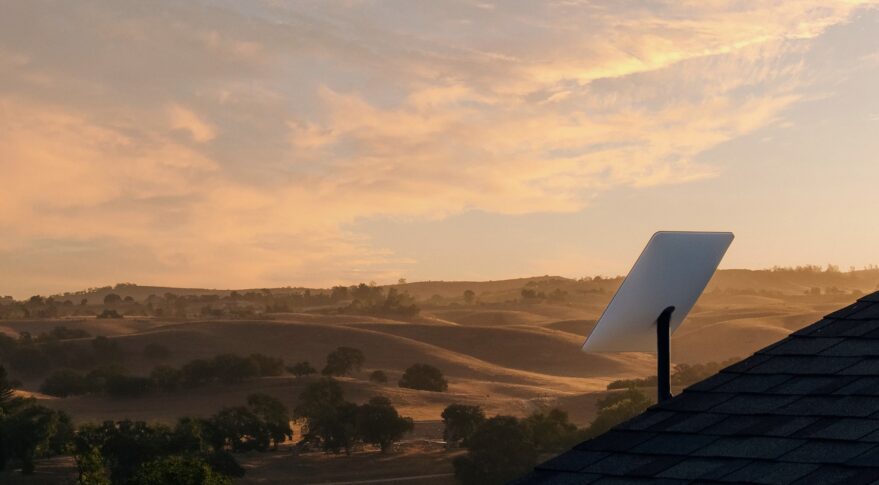
WASHINGTON — The Federal Communications Commission has partially approved SpaceX’s application for the second generation of its Starlink constellation, allowing the company to launch up to a quarter of the proposed 30,000 satellites while deferring action on the rest.
In a Dec. 1 order, the FCC granted permission to SpaceX to launch 7,500 satellites of its proposed Gen2 Starlink constellation, allowing the company to begin deployment of the system while it reviews the overall proposal by the company for placing 29,988 satellites into low Earth orbit.
Those 7,500 satellites would go into orbital shells at an altitude of 525 kilometers and an inclination of 53 degrees, 530 kilometers and 43 degrees, and 535 kilometers and 33 degrees. Those shells, the FCC said, were the first the company planned to populate in the deployment of the overall Gen2 Starlink system.
“Our action will allow SpaceX to begin deployment of Gen2 Starlink, which will bring next generation satellite broadband to Americans nationwide,” the FCC said in the order. “At the same time, this limited grant and associated conditions will protect other satellite and terrestrial operators from harmful interference and maintain a safe space environment, promoting competition and protecting spectrum and orbital resources for future use.”
SpaceX had sought permission to launch satellites into both higher and lower orbits than the shells approved by the FCC. That included 19,440 satellites in orbits between 340 and 360 kilometers and 468 satellites at altitudes of 604 and 614 kilometers. Its application included 10,080 satellites in those three shells between 525 and 535 kilometers.
The FCC said its initial approval matches SpaceX’s plans for deployment of the constellation, which would start with those three shells and use both Falcon 9 and Starship launches. SpaceX then planned to fill the lower shells before completing the system with the 604- and 614-kilometer shells.
The FCC said its decision addresses orbital safety concerns raised by competing satellite operators and others. Because SpaceX no longer plans to deploy a separate 7,518-satellite V-band system previously authorized by the agency, the order stated, “the total number of satellites SpaceX is authorized to deploy is not increased by our action today, and in fact is slightly reduced, as compared to the total number of satellites SpaceX would potentially have deployed absent today’s action.”
Allowing partial approval, the FCC said, was consistent with past actions, such as when it granted SpaceX permission to launch 10 Starlink first-generation satellites into a polar orbit while it reviewed a modification to SpaceX’s license in 2021. “Here, the public interest would be served by taking this approach in order to permit monitoring of developments involving this large-scale deployment and permit additional consideration of issues unique to the other orbits SpaceX requests.”
While the order allows some variation in the altitudes of the satellites in those three shells, to address variations in atmospheric drag, the order restricts SpaceX from having any Starlink satellite go above 580 kilometers at this time to avoid conflicts with Amazon’s Project Kuiper satellites, which are licensed for those higher altitudes.
The FCC said that the Gen2 Starlink satellites should be able to comply with its new order, approved in September, requiring satellites in low Earth orbit to deorbit no more than five years after the end of their lives, even of the satellite fail and are unable to deorbit on their own.
The order, though, adds a new condition proposed by LeoLabs that limits the number of “object years” of failed Gen2 Starlink satellites: the number of years each failed satellite remains in orbit, added up over all the failed satellites. If the system passed a threshold of 100 object years, the FCC said, it will require SpaceX to pause deployment of additional satellites “while the sources of satellite failure are reviewed to determine whether there are any adequate and reliable mitigation measures going forward.”
In addition to standard requirements that SpaceX coordinate frequency use with other satellite systems, particularly those that have priority from previous processing rounds, the FCC required SpaceX to continue to coordinate with NASA to avoid conflicts with NASA satellites. It also requires the company to work with the National Science Foundation and specific observatories to mitigate interference with radio and optical astronomical observations.
The size of the Gen2 satellites, significantly larger than existing Starlink satellites, has raised concerns among astronomers that they could be significantly brighter. SpaceX has argued it will incorporate new technologies, such as dielectric mirrors, to reflect sunlight away from the Earth and make the Gen2 satellites dimmer than current models. The FCC will require SpaceX to coordinate with the NSF on mitigating the brightness of the satellites, filing an annual report on those efforts.
The FCC, though, declined to require an environmental assessment for the Gen2 Starlink constellation under the National Environmental Policy Act (NEPA). The FCC, in response to a Nov. 2 report by the Government Accountability Office about the applicability of NEPA to satellite systems, said it would review the existing categorical exemption for large constellations like Starlink, but was waiting until after the Council on Environmental Quality completed revisions to its regulations for implementing NEPA.